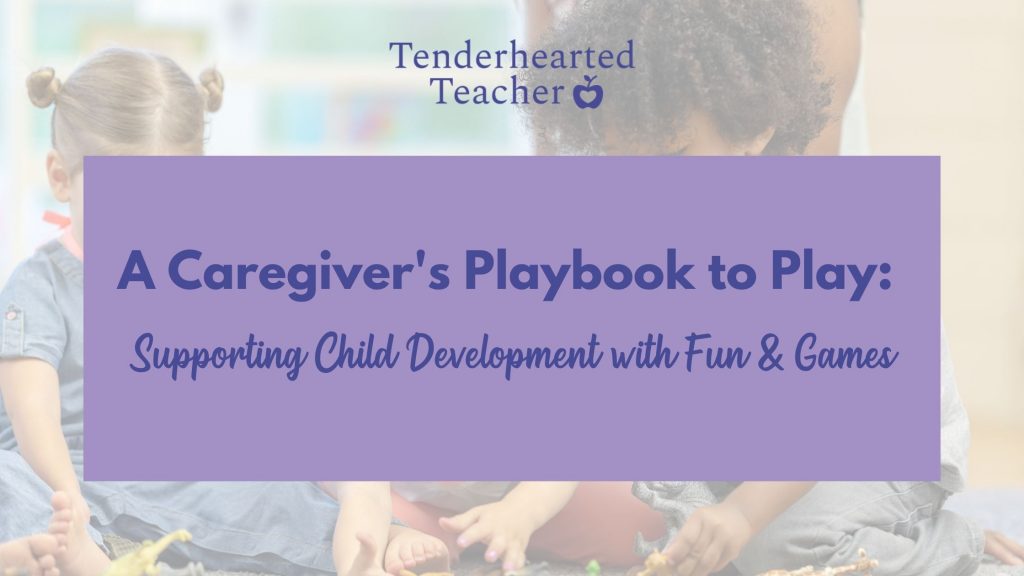
For those of you who are new here, I’m a huge advocate for play in early childhood. You’ll find I talk quite a bit about it on this blog. A few months back, I posted an article The Importance of Play in Preschool: Learning Through Fun and Games. There’s so much to say and learn about it. So, today I want to introduce you to the stages of play development and what those look like for young children. Additionally, I’ll discuss different types and the ways we can support our children’s development.
What Are the Stages of Play Development?
As a caregiver to a little one, I’m sure you’ve heard (and perhaps maybe stressed over) the typical developmental milestones for children. The CDC recently released updated ones for the first time since 2005. When discussing milestones people often refer to speech & language, cognition, and physical development. But, did you know there are also developmental stages of play? During these stages you’ll notice your child’s skills will become more sophisticated as they age.
Before I dive into them I want to say one thing first. Whenever I talk about milestones I always want to remind caregivers that all children develop at their own pace and many factors can impact a child’s progression through the stages. I don’t share this information to worry anyone, but rather to inform you of typical development so you know what to look out for. Therefore, these descriptions are meant to be a general guide of what to expect. It should also be noted that while these stages often happen progressively, they can also occur simultaneously as well.
Parten’s 6 Stages of Play Development
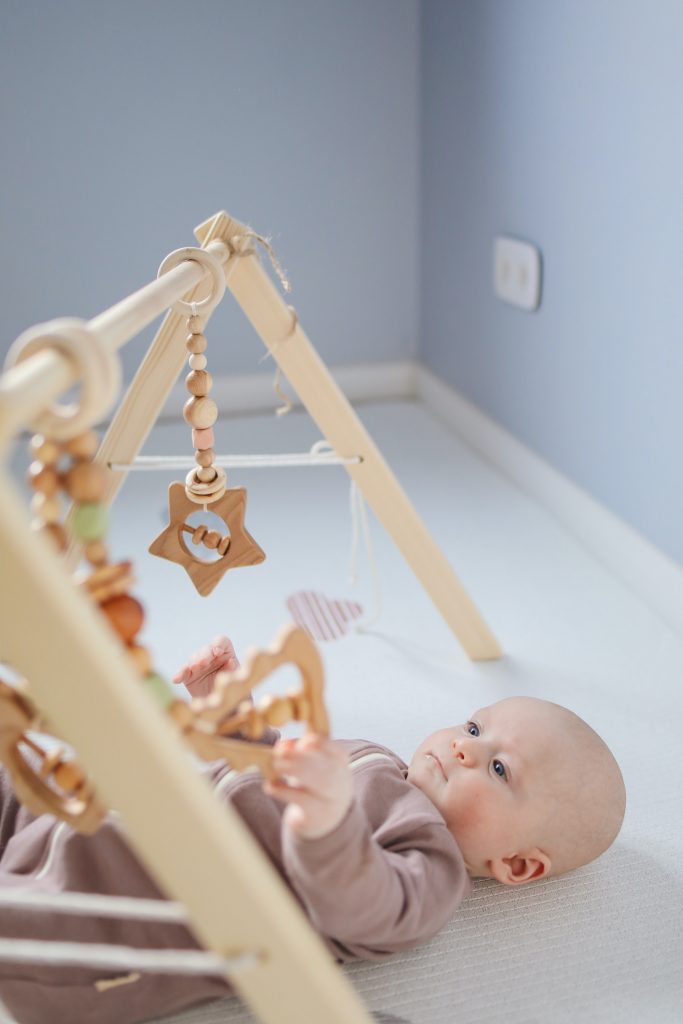
Polina Tankilevitch from Pexels
During the 1930s, sociologist and researcher Mildred Parten presented a model of the developmental stages that are still referred to today. She suggested that children move through six main stages as they grow and develop.
Unoccupied (Approximately 0-3 months)
This is a type that we commonly see in infants. It may not even look like play to most, but a lot is happening during these moments. Babies are learning about and observing their surroundings. This stage lays the groundwork for future play and exploration. An example of this would be a baby in their crib looking up at a mobile while moving their hands and feet.
Solitary or Independent (Approximately 0-2 years)
Young children play alone with no attempts to engage with others during this stage. A child practices many skills as they explore, handle, and manipulate objects and materials in this stage. Solo playtime should be encouraged because it helps to foster independence. It should be noted that this is a good time for parents to take a break and observe.
Onlooker (Approximately 2 years)
During the onlooker stage a child will observe the actions of others. But, they will not engage with them or participate in the activity. This is a normal stage of development. It doesn’t necessarily indicate that a child is shy or reserved. Instead, think about it more as a learning experience. Children are developing new skills by observing other people and their interactions (how to use certain objects, how to share, how to effectively communicate, etc.)
Parallel (Approximately 2 years +)
This stage is the beginning of more socialization. It means that children will play side-by-side or in close proximity to each other. But, they do not engage in the same activity or interact with each other.
Associative (Approximately 3-4 years)
With this stage children begin to demonstrate interest in playing with others around them. But, there’s no rhyme, reason, or order to the interactions. They may talk to each other as well as use the same toys. But, they each have their own agendas and they aren’t coordinating or planning together.
Cooperative (Approximately 4 years +)
During the final stage children engage and work together towards a common goal or outcome. Examples of this are children playing a board game, working together to complete a puzzle, or acting out various roles like doctor and patient. In this stage it is common for disagreements between children to arise. Allow them the opportunity to problem-solve and find solutions on their own. Intervene only when necessary. If you have to assist, use the interaction as a learning experience to teach appropriate behavior and social-emotional skills.
Various Types of Play
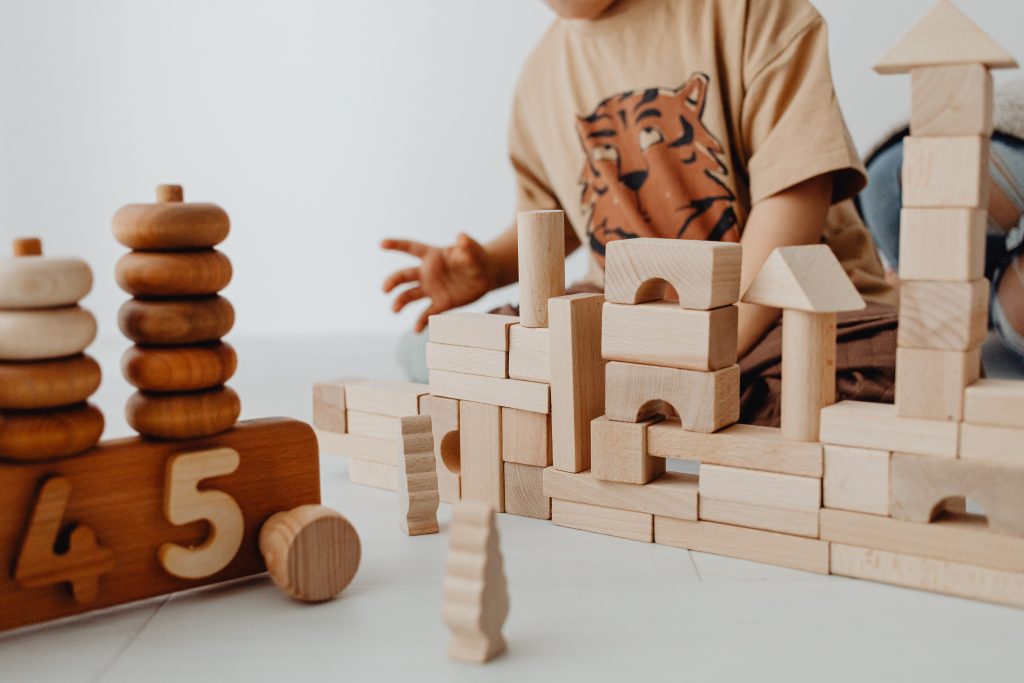
Now that you understand the stages of play development, it’s also important to be aware of common forms or types of play. Here are a few examples. Please note that it is possible for activities to fall under several categories at the same time.
Physical or Motor
This one is pretty self-explanatory. It’s any type of play that encompasses motor skills. It allows for children to develop coordination, strength, and fitness skills. Examples would be kicking/throwing a ball, climbing on playground equipment, and completing an obstacle course, etc.
Constructive
During constructive play children explore and manipulate objects. They problem-solve, see how things fit and work together, stack, and build, for example. Children engage in this type of play starting in infancy. Then their skills develop and become more refined over time.
Creative
Think of this type as anything that allows children to creatively express themselves, their ideas, and feelings. So for example this can be through music, arts and crafts, and storytelling, etc.
Dramatic
This type, sometimes referred to as fantasy play, allows for a child’s imagination to run wild. It can be done independently or while interacting with others. During these activities children create scenarios and act out various roles like doctor, firefighter, princess, etc. This is great for social-emotional learning as well as for developing vocabulary.
Competitive
The last form I’ll discuss includes any type of activity that has rules or a set structure. This can include board or card games and individual or team sports, to name a few. Competitive play is great for teaching children to share, follow rules/directions, and cooperate. It also builds social-emotional skills and lets children learn about winning, losing, and good sportsmanship.
What Can You Do To Support Play Development?
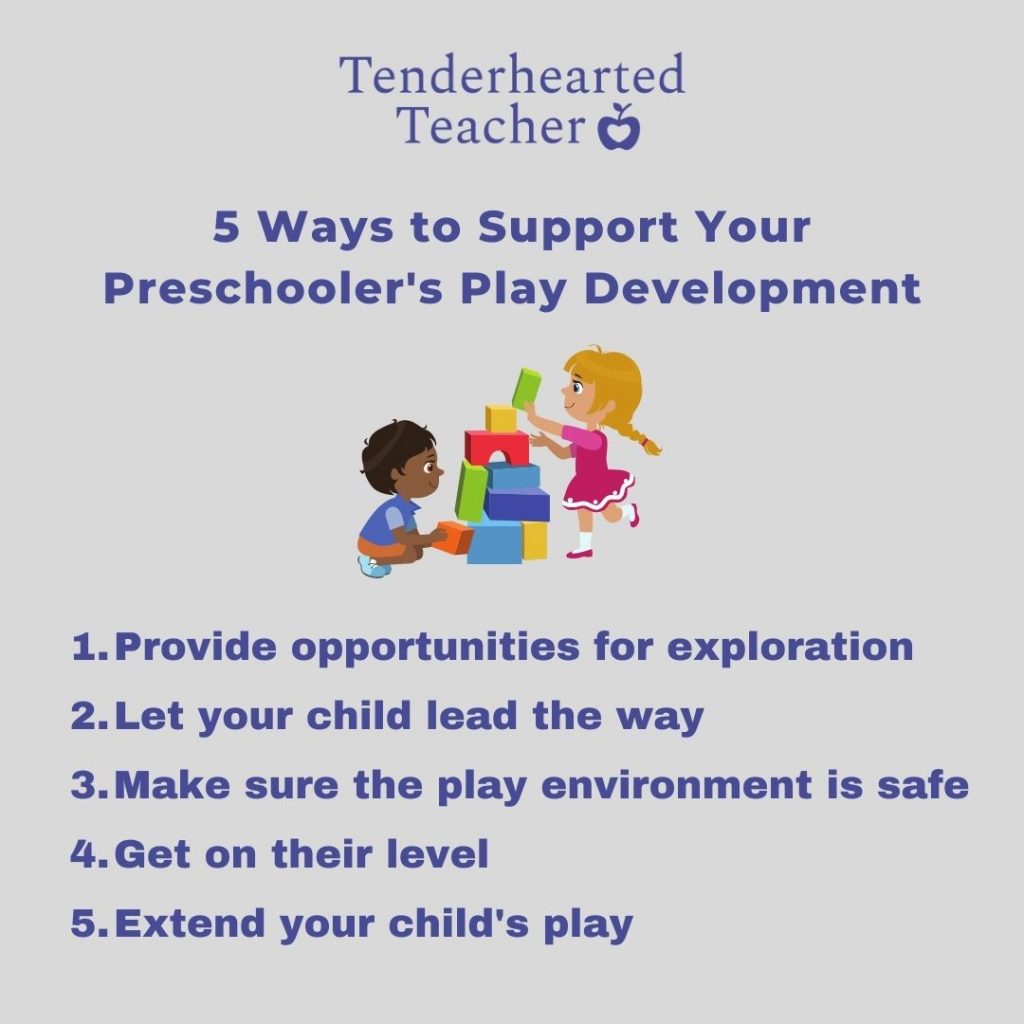
Play has extensive benefits. It helps to develop a child’s vocabulary, cognition, motor-skills, creativity/imagination, and social-emotional skills (like how to appropriately cooperate, share, and engage with others.) So what can you do to support play development in your child’s life? These are 5 strategies to consider when playing with preschoolers:
- Provide opportunities for exploration: Play is really about giving a child the opportunity to explore myriad materials, scenarios, and places. This means that you should allow them to play in different settings (indoors/outdoors,) with a variety of toys and objects, and give chances to play independently as well as with others. It also means you want to make sure to allow them to engage in various types of play like the ones mentioned above (fantasy, competitive, constructive, etc.)
- Let your child lead the way: Play should be child-directed. Caregivers shouldn’t dictate how a child plays and with what. Allow them to make choices about what they want to play with and how. For example, if your child wants to use a box as a rocket ship or an empty container as a drum let them!
- Make sure the play environment is safe: Model safe and appropriate behavior and talk about safety. For example, a child should be taught that toys don’t go into electrical outlets or that they shouldn’t run into the street to grab a ball, etc. Making sure play is safe also includes providing toys that are age-appropriate, in proper working order, and aren’t choking hazards.
- Get on their level: It’s great to let your child play alone at times so they learn how to problem-solve and gain independence (and also to give you a break!) But, it’s important to schedule playtime with your child too. It’s all about finding a balance. When you do play with your child, don’t be afraid to get silly or dirty! Sit on the floor, kick that ball, put on a costume, have a tea party, etc. But, most importantly, keep distractions away (like phones, computers, and T.V.) and stay engaged even if you can only give your child 15 minutes a day!
- Extend on your child’s play: Take the opportunity to speak to your child during daily activities. Ask questions, extend on their answers, and provide them with new vocabulary words or phrases. Example: You are walking outside and your child points to some river rocks. They tell you they would like to stack and count them. As they play, you might say things such as, “I see you’ve found river rocks. Tell me about them. Are they the same size or different? Yes, they are different. This one is small and this one is big. What do they feel like? Are they rough or smooth? These are both smooth because they have no lumps or bumps.” Additionally, if you find that your child has particular interests you can extend their play into future experiences. Let’s say your child is fascinated by airplanes. Here are some fun things you can do to expand their knowledge. Take them to a local aviation museum. Borrow books about planes from the local library. When you go for a walk point out planes and look at them through binoculars. Pretend to be pilots or airplane mechanics during dramatic playtime.
Finally, please know that play activities do not need to be expensive in order to be meaningful. In fact, here’s a post with some free activities that you can do with your preschooler using common household items. If you do happen to find yourself in need of new toy ideas, you can always check out my favorite product recommendations on my shop page.
Now talk to me! Comment below and let me know about your little one. What stage are they in now? What types of activities do they love?
Developmental Milestones Related Posts
- Stages of Emergent Writing in Early Childhood (What Stage is Your Little One In?)
- Typical 4 Year Old Development: Milestones to Look For
References: Gordon Biddle, K. A., Garcia-Nevarez, A., Roundtree Henderson, W. J., & Valero-Kerrick, A. (2014). Early childhood education: Becoming a professional (pp. 258–280). Sage Publications. The 12 types of play and what they mean for children. Blog - Commercial Playground Equipment. (n.d.). Retrieved March 11, 2022, from https://www.americanparkscompany.com/blog/types-of-play-for-children/ Understanding Mildred Parten's social behavior theory of play. Paper Pinecone. (2020, August 3). Retrieved March 10, 2022, from https://www.paperpinecone.com/blog/understanding-mildred-partens-social-behavior-theory-play
SAVE TO PINTEREST
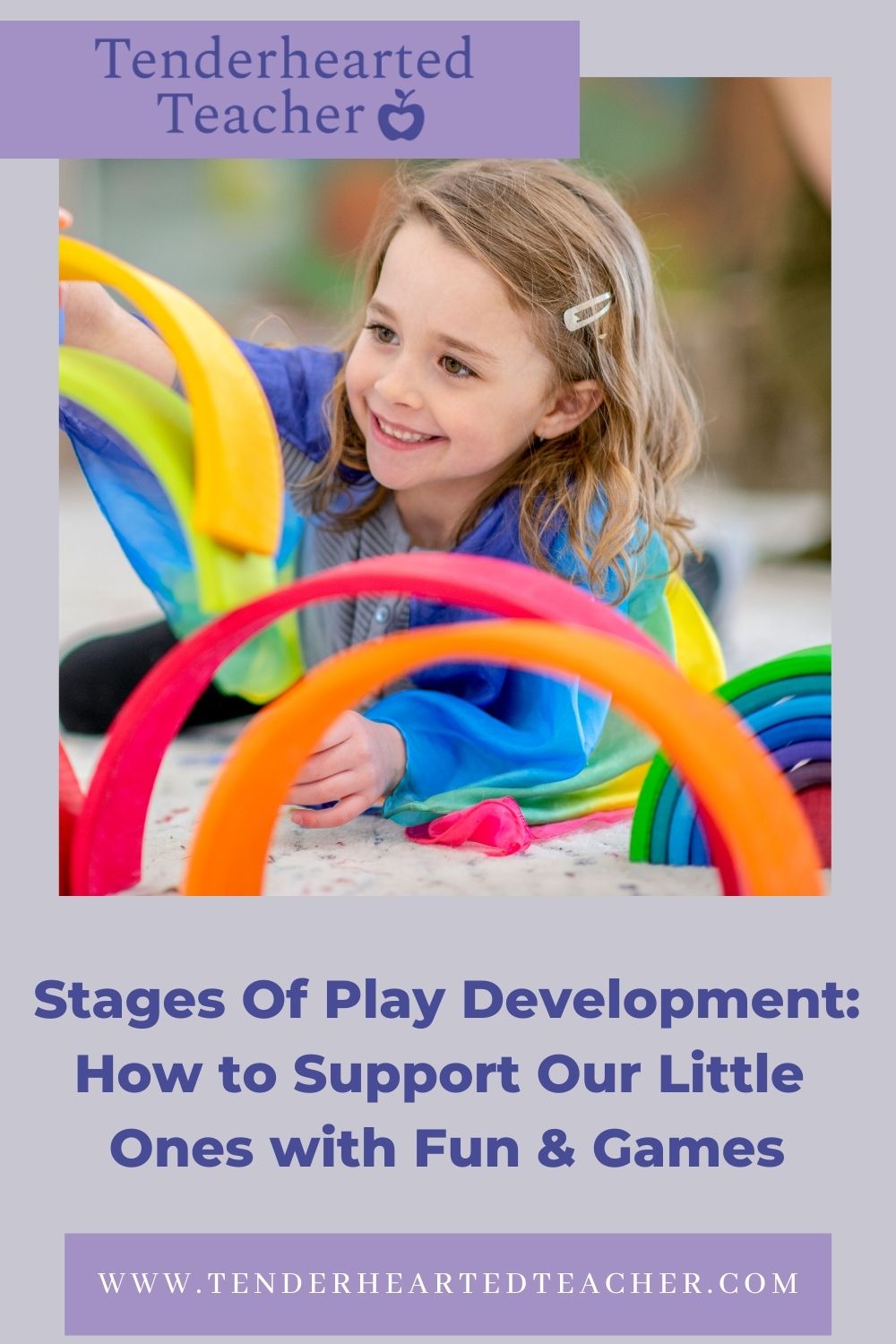
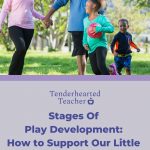

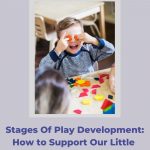
Play is extremely important for a child’s development. Playtime provides vital information to parents that helps them learn more about their children. Understanding the need for play at every stage is vital
Couldn’t agree with you more, Idara!
Ms. Sally:
I really enjoyed reading your article. As a grandmother to an exceptional child, he has hit all the marks and above of an almost 2 year old. Looking forward to follow your advice in his future years. Thank you for your knowledge and dedication for our children’s futures.
Thank you for your comment! I’m glad you enjoy the content!
Love this post! This is so informative. My daughter is currently at the associative stage and I will be sure to refer back to this article as she goes through the different stages!
Thanks so much! I love to stand back and watch their wheels turning during play. It’s fascinating to watch them explore, problem-solve, and interact with others!
Play is essential for the development of a child.
Hi! My daughter loves to play with me and gives directions during many pretend play scenarios. Is that Associative Play stage?
At her school though, since she is not a native English speaker and doesn’t have much vocabulary, she only does parallel and onlooker play… how could I help her to get more comfortable with her peers as she would with me at home?
Thank you for your comment, Jessica. What a great question! I have taught many ESL preschool students over the years as well as children with communication/language delays. I’ve learned that play is a universal language and most children will learn to play with others regardless of language barriers as long as they are given time and ample opportunities to do so.
It sounds to me like your child plays cooperatively with you at home so her skills are already developing nicely. As she becomes more comfortable with English, those skills will begin to translate into her play experiences with her peers. Many ESL students go through what we call “a silent period” when they spend their time observing and listening to those around them while they learn the language.
So, I’d continue to emphasize the importance of listening, observing, and following along with peers during games, even if they don’t fully understand the language spoken. In addition, continue to give her opportunities to play in group settings with other children. I’d also practice using simple English phrases/questions related to play that your child can use in the classroom such as “can I play too?” or “my turn, your turn,” etc.
Finally, I suggest talking to your child’s teacher about how you can encourage these play skills at home. Since they know your child well they can provide more specific tips and strategies based on your child’s interests.